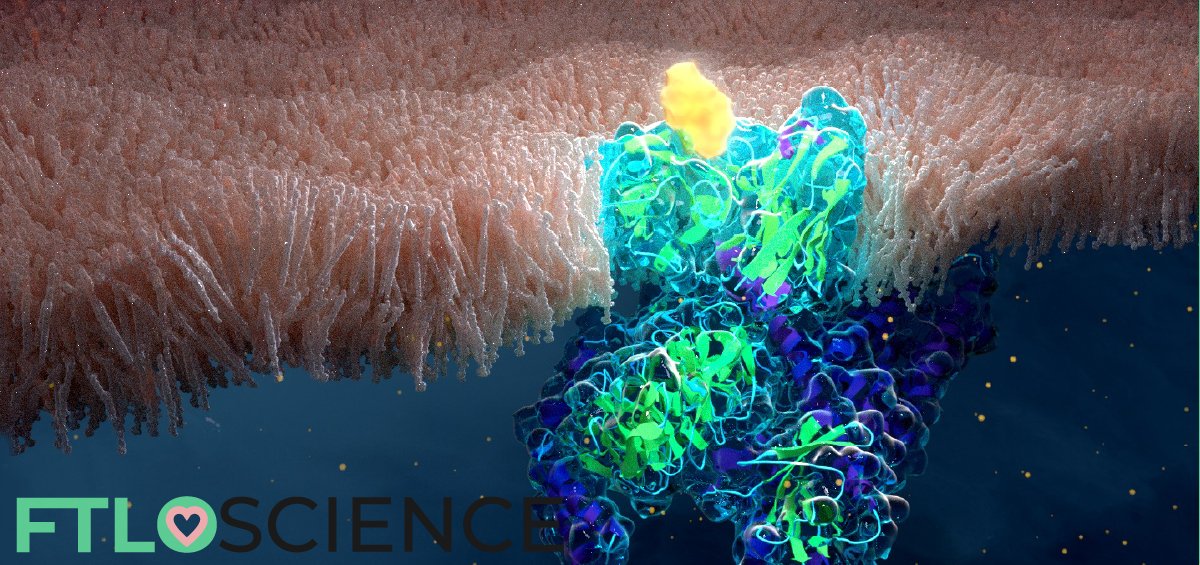For the first time in history, Alaska canceled its snow crab season in 2022, citing a 90% decline in the Alaskan snow crab population in the Arctic. Did they die off? Did they migrate? What could have caused it? We break down everything you need to know about the sudden disappearance of this popular deep-sea delicacy.
The sudden decline of Alaskan snow crab numbers in the Bering Sea that led to the cancellation of the 2022 crab fishing season was likely caused by overfishing and trawling, magnified by the increased rate of sea ice melting in recent years. As the ice shelf shrinks further North, fishing vessels can enter previously inaccessible crab breeding grounds, disrupting snow crab breeding grounds and making crab fishing unsustainable.
Alaska Cancels 2022 Crab Season
When the Alaska Department of Fish and Game declared that the 2022 crab season was over before it began, it wasn’t just bad news for restaurant-goers but also for the hundreds of fishermen who depend on crab fishing to make their living—Alaska is responsible for 60% of the total seafood production in the U.S.
The reason for this cancellation was that the snow crab population had seemingly vanished overnight, going from over 11 billion in 2018 to just 1.9 billion in the 2022 trawl survey of the Bering Sea. The U.S. National Oceanic Atmospheric Administration (NOAA) collects this data annually to study population changes of commercial fish and crab species.
Both scientists and the public began speculating on the possible reasons for the mysterious disappearance of Alaskan snow crabs. Did the crabs pack up and move further North to colder waters? Was there a deadly disease decimating the population? Was it merely overfishing the previous year?
We can find clues to this mystery by looking at a similar mass disappearance in the 1980s.
Wait, This Has Happened Before
How the Alaskan Crab Season Works
Alaskan crabs are caught by ‘potting’—dropping baited cages to the ocean floor, waiting a few days, then pulling them up. Fishermen must sort through each catch, keeping only male crabs of a specific size. As part of the breeding pool, female and juvenile crabs must be returned to the ocean.
Several species of Alaskan crabs exist under two main categories: king crab and snow crab.
| Crab Species | Category | Weight | Image |
|---|---|---|---|
| Blue King Crab (Paralithodes platypus) | King Crab | 18 pounds (mature male) | 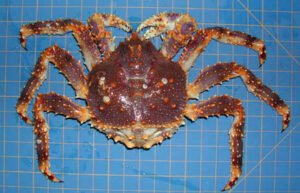 |
| Golden King Crab (Lithodes aequispinus) | King Crab | 5-8 pounds |  |
| Red King Crab (Paralithodes camtschaticus) | King Crab | 24 pounds (mature male) | 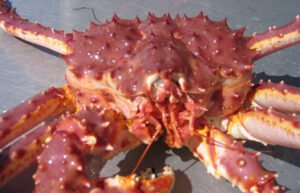 |
| Snow Crab (Chionoecetes opilio) | Snow Crab | 1-2 pounds | 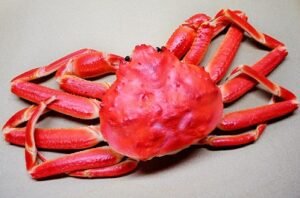 |
| Tanner Crab (Chionoecetes bairdi) | Snow Crab | 2-4 pounds | 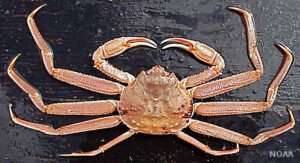 |
Each crab fishing boat sets hundreds of these crab pots every trip, catching several tons of Alaskan king crabs and snow crabs. King crabs are much larger than snow crabs, also fetching a better price in restaurants. King crab costs US$47 per pound, while snow crab costs US$25 per pound, although the prices fluctuate from season to season.
The U.S. government regulates the length of each crab fishing season based on the previous year’s NOAA survey, which can last from several days to a month.
The King Crab Crash
Crabs have been caught this way since 1959, with a record haul of 183 million pounds (83,000 tons) of Alaskan king crab caught in 1979. Just three years later, however, this number had fallen 60-fold. Both king crab and snow crab populations saw drastic declines in the 1980s.
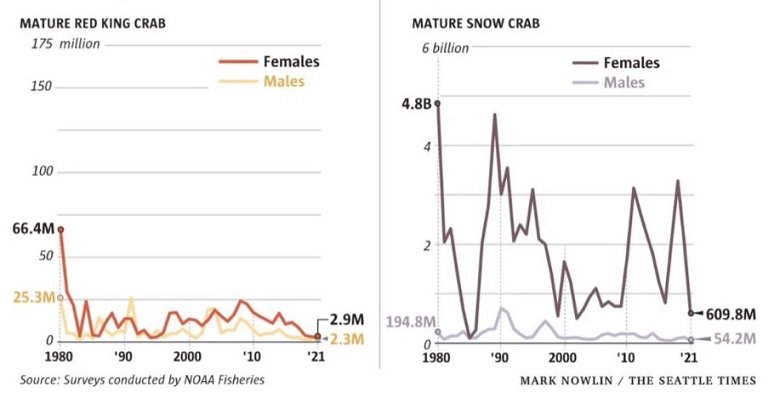
The main culprit for the king crab decline was unmonitored trawling—dragging nets across the sea floor—around Bristol Bay. Trawling is unsustainable because it severely disrupts the breeding grounds and the reproductive cycle of crabs. A 1981 study showed that 88% of king crab trawling bycatch consisted of sexually mature females.
In a bid to arrest this free fall, trawling regulations and quotas around crab fishing were imposed by the Alaskan state. While snow crabs recovered in numbers, 40 years later, the king crab population continues to struggle.
These days, the Alaskan king crab fishing season is usually much shorter than the snow crab season, with fishermen moving between king crabs and snow crabs to fulfill their quotas. This year, however, there will be no crabs in their pots.
Where Have All the Alaskan Snow Crabs Gone?
Eaten by Natural Predators
Snow crabs in the Bering Sea rely on icy cold waters to survive. This is because they can withstand near-freezing temperatures on the ocean floor, where juvenile crabs are protected from predators like cod fish that thrive in warmer waters.
In recent years, climate change has caused sea ice in the area to shrink. This, in turn, has warmed the waters that once offered protection to the crabs. As the graph below shows, there has been an almost 100% overlap between snow crab and Pacific cod habitats since 2017.

Migrating to Colder Waters
As seen in the distribution map below, the Alaskan king crab inhabits the Gulf of Alaska and Bristol Bay, while snow crab populations mainly reside in the Bering Sea. However, the ice cover in these regions seems to be retreating, bringing warmer temperatures with each passing year.
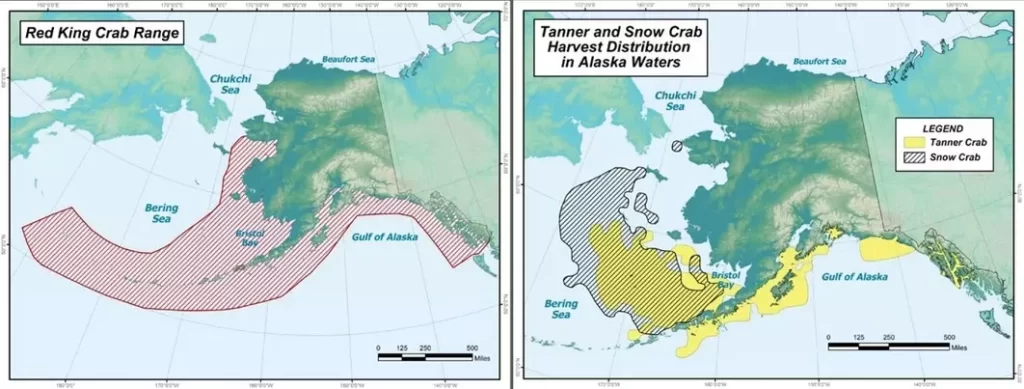
The Bering Sea winter ice reached its lowest levels in 2018 and 2019, and researchers consider warmer winters in these parts to be par for the course because of global warming.
As the ice in the warmer southern regions shrinks, crabs have migrated north to sustain their need for low temperatures. There is evidence showing that male Alaskan snow crab populations in the northern Bering Sea are healthy, although the lack of juveniles means the sustainability of the stock is an issue.
Gone to Crab Pots, Everyone
As with the king crab crisis in the 1980s, overfishing is likely the culprit for the Alaskan snow crab’s disappearance. This melting sea ice in recent years allowed fishing vessels to place crab pots in once inaccessible areas, leading to a sharp decline in the snow crab population.
There is also evidence of trawling in these newly accessible areas. Like the decimation of king crabs in Bristol Bay, trawling in these areas destroys snow crab breeding grounds in the Bering Sea. From what we know, the Alaskan snow crab population may never recover.
When we dig further into the vessel logs, a striking pattern emerges: scores of ships trawling for hundreds of hours across the Northern reaches of the Eastern Bering Sea floor during critical breeding months in areas where snow crabs once could take shelter beneath the ice. pic.twitter.com/uVPfhzn6qD
— spencer 🦀 (@Unpop_Science) October 16, 2022
Impact of Declining Crab Populations
The Deadliest Catch
It isn’t just the crabs that are fighting for survival as fishing moves North. Crab fishing is a dangerous business, with one fisherman dying each week during crab season, on average. If you’ve watched the popular reality show Deadliest Catch, you will know the conditions that crew members on crab fishing vessels face.
As these vessels are forced to travel into deeper waters of the Bering Strait and beyond to match the migration of Alaskan crabs, these conditions worsen. Cold spray condenses inside crab pots, freezing over and weighing down the vessels. On New Year’s Eve of 2019, the fishing vessel Scandies Rose sank because of freezing spray, claiming the lives of five crew members.
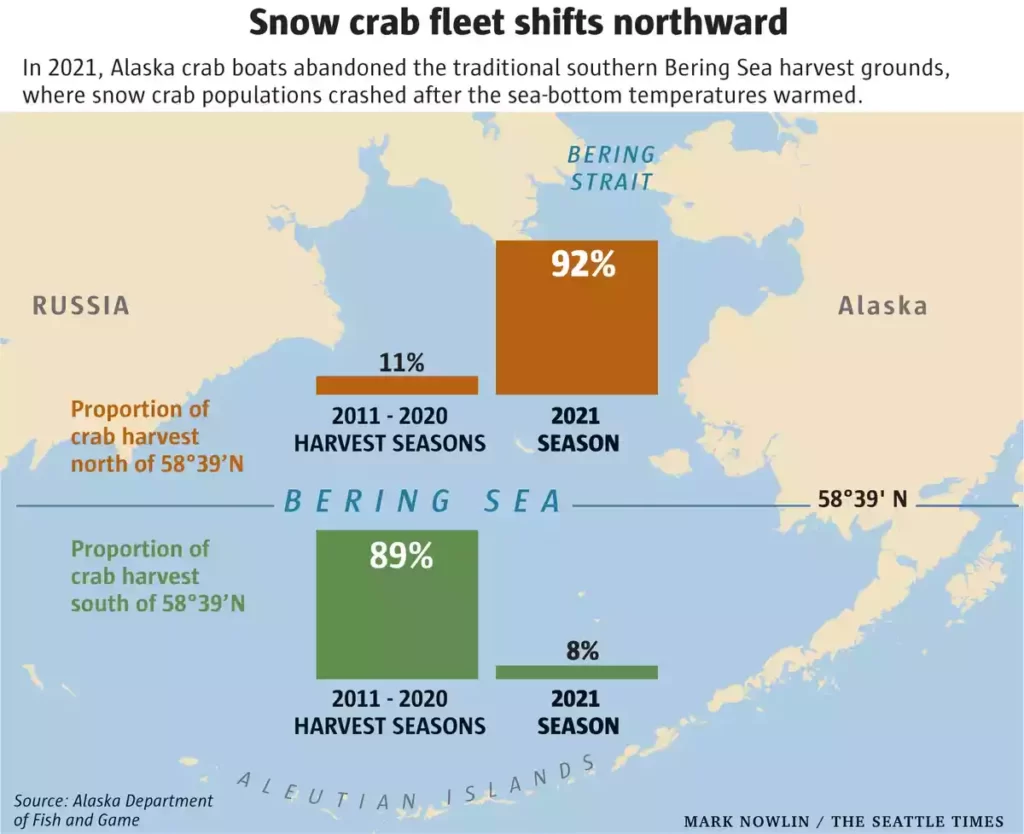
Sustainability and the Sea
Looking at how the Alaskan king crab population was decimated in the 1980s, it seems like déjà vu for Alaskan snow crabs in 2022. Overfishing, destruction of breeding grounds, warmer waters and migration events are putting a tremendous strain on their numbers.
For 40,000 years, humans have turned to the sea for survival. It has been a consistent food source despite our species’ exponential population growth. Still, the signs are there that unsustainable fishing practices and climate change are causing sea-dwelling creatures to disappear.
Many of us take the sea for granted, viewing it as an infinite harvesting ground without considering the consequences of overfishing in the broader ecosystem. We need to look for alternative food sources (lab-grown and plant-based meat is a start), or we risk driving many more species to the brink of extinction.
Alaskan crabs will be unavailable in restaurants for the foreseeable future, which is a shame for those who enjoy the delicacy. But their sudden decline should be a poignant reminder to everyone that—if we continue to farm and fish unsustainably—this animal won’t be the last thing to disappear from our menus.
About the Author

Sean is a consultant for clients in the pharmaceutical industry and is an associate lecturer at La Trobe University, where unfortunate undergrads are subject to his ramblings on chemistry and pharmacology.



